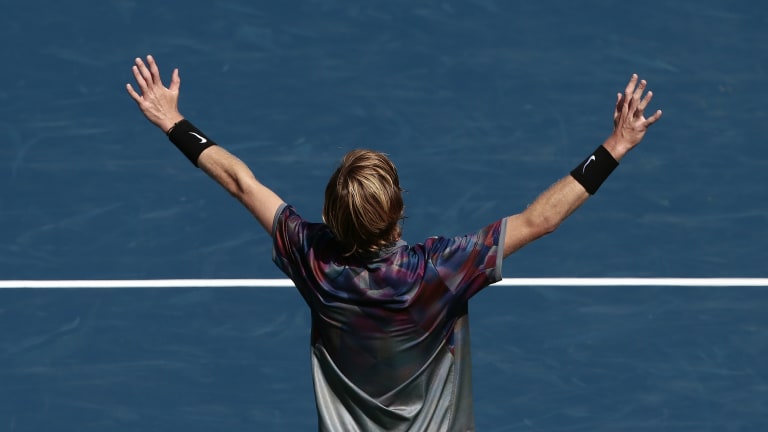NEW YORK— “I mean, look, I know about Next Gen tournament, because all I hear these few days is Next Gen, Next Gen...”
Those were the (slightly irritated) words of Novak Djokovic in Rome this spring after he was asked one too many times about the inaugural Next Gen Finals, a year-end ATP event for players 21 and younger that will be held in Milan in November. It was easy to sympathize with Djokovic; anyone who follows tennis on a regular basis has heard a lot about the Next Gen in 2017.
We’ve heard it a lot at this year’s US Open, too. But while the phrase has been the same, the names have suddenly changed. Over the last seven days, a mini-coup has taken place among the ATP’s youngest guns.
When the tournament started, the talk was all about 21-year-old Alexander Zverev, who won the Masters 1000 event in Montreal, and 22-year-old Nick Kyrgios, who reached the final of the Masters 1000 in Cincinnati. But Zverev and Kyrgios were gone by Wednesday; by the weekend, the buzz was centered on two other, younger players: 18-year-old Denis Shapovalov of Canada, who reached the fourth round, and 19-year-old Andrey Rublev of Russia, who on Monday became the youngest player to reach the Open quarterfinals since Andy Roddick did it in 2001.
Is it time to start talking about the Next Next Gen?
